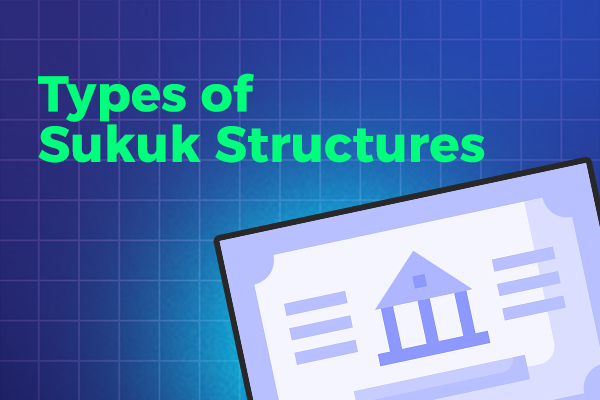Islamic finance has gained significant attention in recent years, and Sukuk structures have emerged as a popular investment option for individuals and institutions. Sukuk, also known as Sharia-compliant bonds, follow the principles of Islamic finance and offer unique features that differ from conventional bonds.
Key Takeaways
- Sukuk structures provide investment opportunities for individuals and institutions in Islamic finance
- Sukuk, or Sharia-compliant bonds, follow the principles of Islamic finance
- Sukuk structures have unique features that differ from conventional bonds
Understanding Sukuk and Islamic Finance
In the world of Islamic finance, Sukuk serves as a primary means of raising capital and generating investment opportunities. Sukuk can be defined as Sharia-compliant bonds, which operate according to Islamic principles. Unlike conventional bonds, which are interest-bearing debt securities, Sukuk represents an ownership interest in a particular asset or project.
Sukuk issuance is becoming increasingly popular, with many countries and institutions turning to this method for funding. The principles of Sharia compliance make Sukuk an attractive investment opportunity for individuals and institutions seeking ethical investment options.
Common Sukuk Structures
Sukuk structures are diverse and flexible, designed to accommodate a wide range of financing needs. The most common Sukuk structures include Musharakah, Murabahah, Ijarah, and Istisnah. In this section, we will explain each structure and their application in Sukuk issuance.
Musharakah
Musharakah is a partnership-based Sukuk structure whereby two or more parties contribute capital to a venture, sharing profits and losses based on a pre-agreed ratio. Musharakah Sukuk issuances involve pooling resources from investors to finance a project or business, with the investors sharing in the profits and losses generated by the venture.
Murabahah
Murabahah is a cost-plus financing structure, where a financial institution purchases goods or assets required by a client and sells them to the client at a marked-up price. The marked-up price represents the profit earned by the financial institution. Murabahah Sukuk is backed by tangible assets, and the return on investment is generated by the sale of these assets.
Ijarah
Ijarah is a lease-based Sukuk structure. In an Ijarah Sukuk issuance, the issuer leases out an asset, such as a building or equipment, to a lessee, who pays periodic rent. Ijarah Sukuk issuances generate returns in the form of rental payments made by the lessee.
Istisnah
Istisnah is a contract-based Sukuk structure. In an Istisnah Sukuk issuance, the issuer contracts with a manufacturer to produce a specific asset, such as a building or machinery. The manufacturer is paid in installments as the asset is produced. Once complete, the asset is sold to a buyer at a predetermined price, providing returns for the investors.
These four structures are the most common Sukuk structures, each with its unique application in Sukuk issuance. Understanding the characteristics and application of each structure is essential in selecting the appropriate Sukuk for investment purposes.
Emerging Sukuk Structures
As the Sukuk market continues to grow, new structures have emerged to meet the evolving needs of investors. In this section, we will explore three emerging Sukuk structures that have gained popularity in recent times.
Wakalah Sukuk
Wakalah Sukuk is a structure that combines features of both Ijarah and Wakalah. In this structure, the Sukuk issuer acts as an agent on behalf of Sukuk holders to invest in a specific project or asset. The returns generated from the investment are then distributed among the Sukuk holders according to the predetermined profit-sharing ratio.
The issuer charges a management fee for its services, which is usually a percentage of the profits generated. This fee is deducted from the profits before they are distributed to the Sukuk holders. Wakalah Sukuk provides investors with a less risky investment opportunity as the issuer acts as an agent on behalf of the Sukuk holders.
Mudarabah Sukuk
Mudarabah Sukuk is a type of Sukuk that is based on the principle of Mudarabah, which is a profit-sharing agreement between two parties. In this structure, the Sukuk issuer acts as the Mudarib (entrepreneur) while the Sukuk holders act as the Rabb-ul-Maal (investor).
The Sukuk issuer invests the funds raised through the Sukuk issuance in a specific project or asset. If the project generates profits, they are shared between the Sukuk issuer and holders according to the predetermined ratio. However, if the project incurs losses, the Sukuk holders bear the loss, while the Sukuk issuer loses its management fee.
Hybrid Sukuk
Hybrid Sukuk is a combination of two or more Sukuk structures, such as Mudarabah, Ijarah, Wakalah, and Istisnah. This structure enables issuers to customize Sukuk by incorporating specific features from multiple Sukuk structures to meet the needs of investors.
Hybrid Sukuk offers flexibility to issuers who want to broaden their investor base by accommodating the needs of different types of investors. It also allows investors to diversify their portfolio by investing in Sukuk with different structures and risk profiles.
Sukuk Market Analysis
The Sukuk market has experienced steady growth over the years, with increasing demand for Sharia-compliant bonds among investors seeking alternative investment opportunities. In 2020, global Sukuk issuance totaled USD 139.8 billion, a 5.5% increase from the previous year.
The Middle East and North Africa (MENA) region remains the largest market for Sukuk issuance, accounting for 67% of global Sukuk issuance in 2020. Malaysia is also a significant player in the Sukuk market, accounting for 29% of global Sukuk issuance.
The COVID-19 pandemic had a significant impact on the Sukuk market, with many issuers delaying or cancelling their planned Sukuk issuances due to market volatility. However, the market quickly rebounded, with issuances totaling USD 52.6 billion in the first half of 2021, a 35% increase from the same period in 2020.
There has been a trend towards diversification in Sukuk structures, with issuers exploring new structures such as Wakalah and Mudarabah. The Sovereign Sukuk market has also seen growth, with more governments using Sukuk to finance infrastructure projects.
As the global economy continues to recover from the effects of the pandemic, it is expected that the Sukuk market will continue to grow, providing attractive investment opportunities for individuals and institutions seeking Sharia-compliant investment options.
Conclusion
Overall, Sukuk structures provide an excellent investment opportunity for individuals and institutions seeking to engage in Islamic financing. The various Sukuk structures offer unique features that cater to specific investment needs, and their principles align with Sharia-compliant financial practices.
As the demand for Sharia-compliant investments continues to grow globally, the Sukuk market has seen substantial growth and development. The emergence of new Sukuk structures such as Wakalah, Mudarabah, and Hybrid Sukuk has expanded the investment options available to investors in the market.
In conclusion, Sukuk structures present an excellent opportunity for investors to engage in Islamic finance while complying with Sharia law. As the Sukuk market continues to evolve, individuals and institutions alike can benefit from the numerous investment opportunities available through Sukuk issuance.


